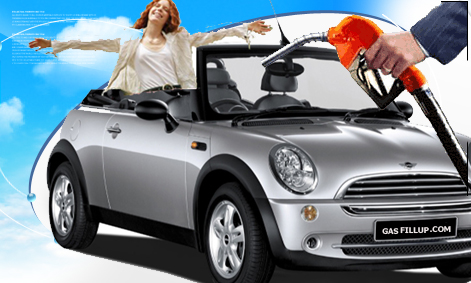|
Oil prices. Gas prices. New and even newer record highs. Gas stations revealing bigger numbers at the pump everyday.
Now some say the national average could go above $3/per gallon. Some stations in California are already there. Adjusted for inflation, gas prices are nearing the record highs set in the 1980s.
Some argue that relief will eventually come, but nobody knows for sure. One thing though is certain: gas-guzzling is out, penny-pinching is in.
Here are today's five tips.
1. Forget customer loyalty.
When it comes to soaring gas prices, it's everyone for themselves. While you might be a regular at Buddy's Self-Serve, Buddy could be taking advantage of his loyal patrons by charging 20 cents more a gallon than other stations in the area. That adds up over time: filling your 15-gallon tank twice a week at Buddy's will cost you an extra $24 dollars a month.
So shop around: To find the best deals on gas in your area, check out our local gas price listings to find the cheapest gas price in your neighborhood.
2. Be a better driver.
As Mom would say, "Drive safely." According to the Department of Energy, aggressive driving -- rapid acceleration and excessive braking -- wastes gas. You can increase your gas mileage by as much as a third or save yourself more than 80 cents a gallon (based on the national average on August 12th average of $2.41/gal) simply by driving safely.
Also, stick to the speed limit, not just for your safety but also for fuel-efficiency. The Department of Energy says that your gas mileage decreases rapidly at speeds above 60 mph. And use your cruise control: it helps you maintain a constant speed, which can also save gas.
3. Time for a tune-up?
Driving the old clunker may save you money over buying a new car, but skipping the tune-up is costing you. The Department of Energy says that a simple tune-up on your car can improve your gas mileage by an average of 4.1 percent.
However, fixing certain parts of the car can dramatically improve your gas mileage. Fixing a faulty oxygen sensor can make an improvement of as much as 40 percent. Replacing clogged air filters, making sure tires are properly inflated, and using the recommended grade of motor oil can also improve gas mileage by as much as 15 percent.
4. Get the right grade.
You may prefer premium coffee, ice cream, and caviar. But let's be honest, does your car need the royal treatment?
AAA says the average gallon of premium-unleaded gas cost $2.65 on August 12, about 10 percent more than a gallon of regular. The Federal Trade Commission is advising drivers to check their owner's guide because most cars don't need premium gasoline.
Justin McNaull, AAA Public Affairs Manager, says less than 10 percent of cars sold in the U.S. need premium.
McNaull also suggests, "Drive your most sensible car. If it's a trip to the grocery store, don't take the pickup, take your compact car."
5. Pack light.
If you're hitting the road for a vacation, consider lightening your load. The FTC advises you to take all unnecessary weight out of the car. For those of you who call your car a closet, keep this in mind: an extra 100 pounds in the trunk reduces a typical car's fuel economy by 2 percent.
Don't place anything on top of the car. A luggage or a loaded roof rack creates wind resistance and can reduce your gas mileage by 5 percent. If you can, keep items inside the car.
And even though airlines are now charging travelers as much as $10 extra round trip for a surge in jet fuel costs, it could still be cheaper to fly. To calculate the price differences, price a flight to your destination and compare it to your estimated cost of driving.
|

